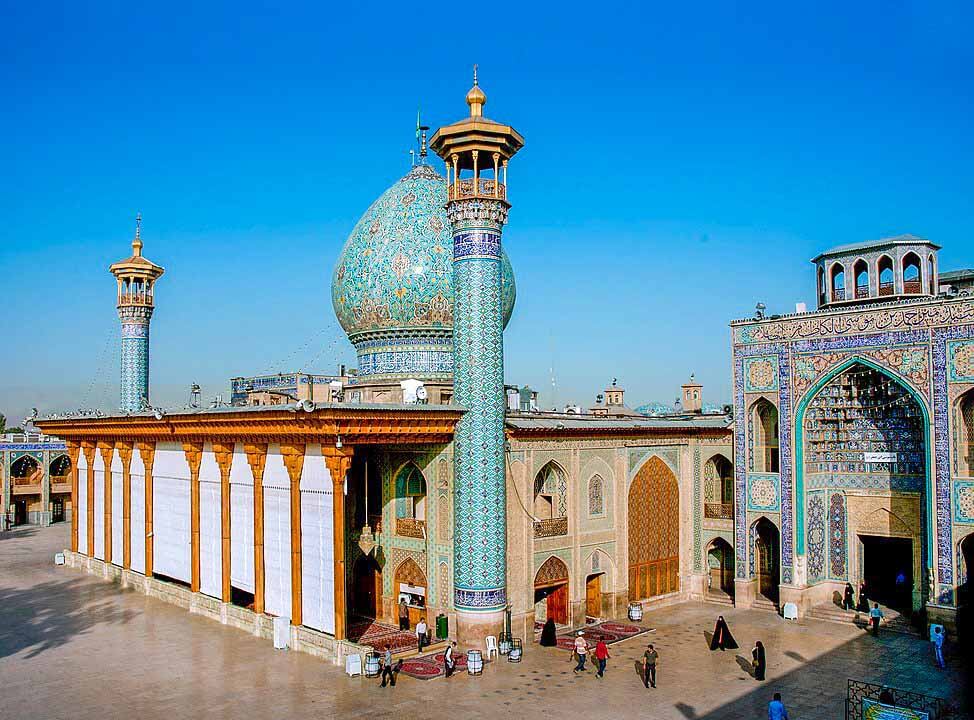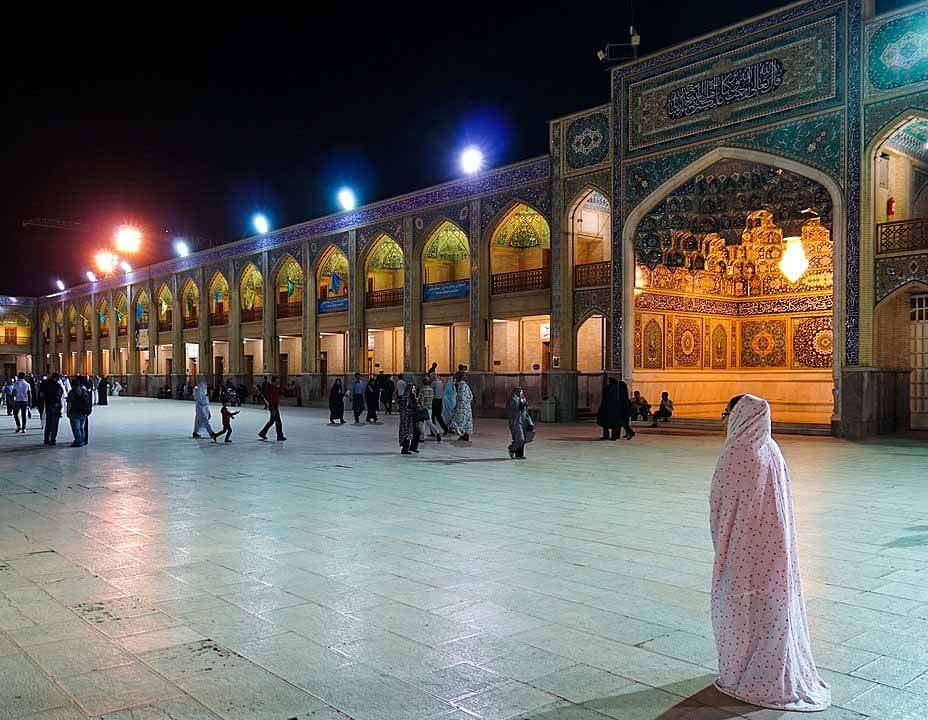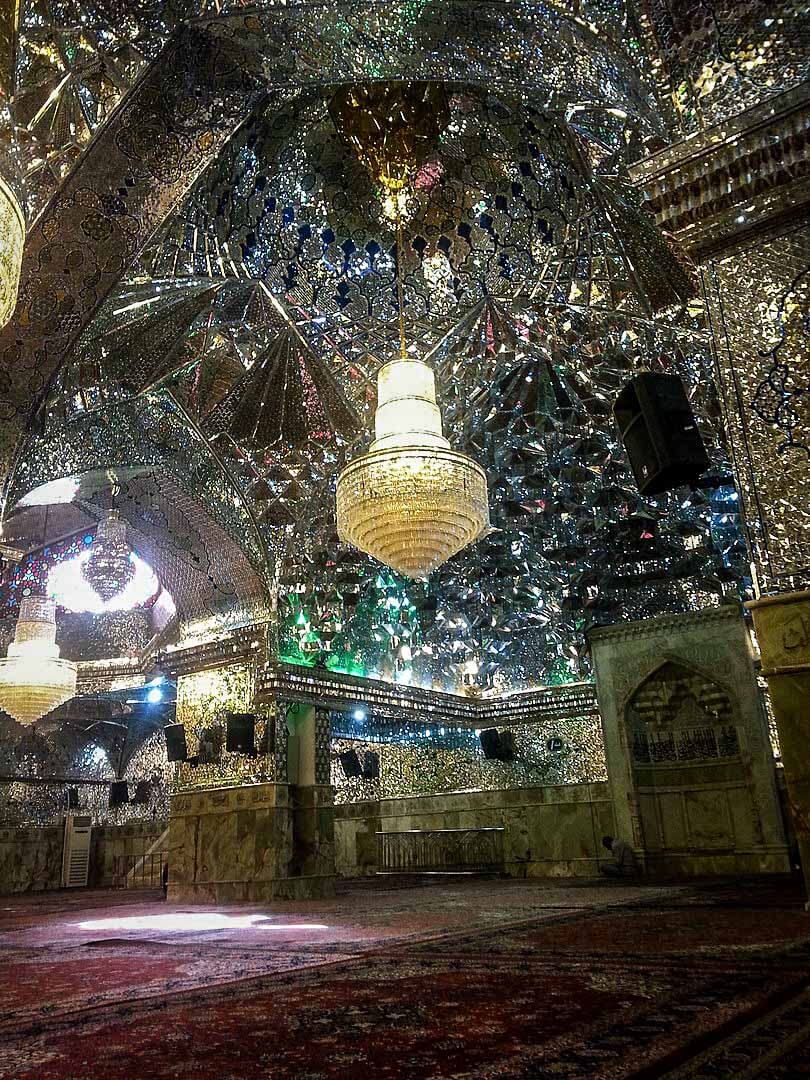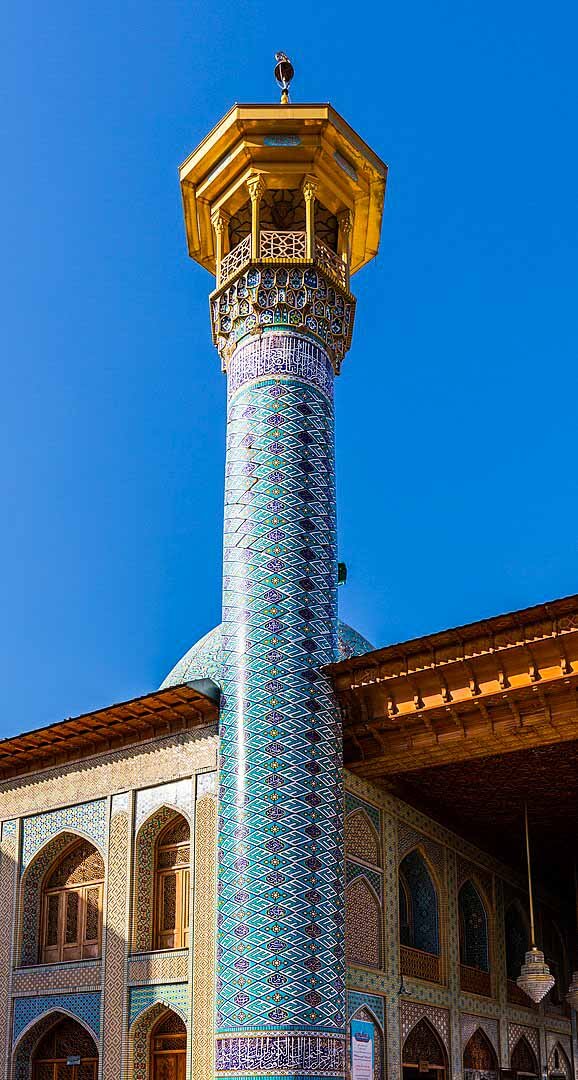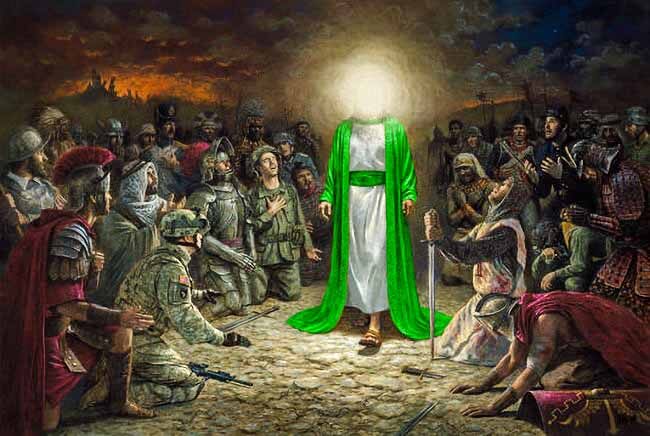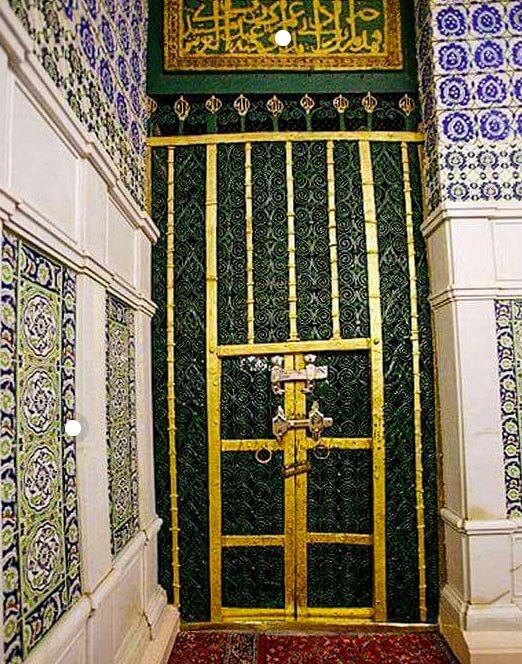Shiraz, Iran
Coordinates: 29.609600, 52.543300
Shah Cheragh is a funerary monument and mosque in Shiraz, Iran, housing the tomb of the brothers Hz. Ahmad رضي الله عنه and Hz. Muhammad رضي الله عنه, sons of Hz. Musa al-Kadhim رضي الله عنه and brothers of Hz. Ali ar-Ridha رضي الله عنه.
Discovery of Grave
The site was given this name due to the nature of the discovery of the site by Ayatullah Dastgha’ib. He used to see light from a distance and decided to investigate the source. He found that the light was being emitted by a grave within a graveyard.
The grave that emitted the light was excavated, and a body wearing an armor was discovered. The body was wearing a ring saying al-Izzatu Lillah, Ahmad bin Musa, meaning “The Pride belongs to God, Ahmad son of Musa”.
Thus it became known that this was the burial site of the sons of Hz. Musa al-Kadhim رضي الله عنه.
History
The site is the most important place of pilgrimage within the city of Shiraz.
Hz. Ahmad رضي الله عنه came to Shiraz at the beginning of the third Islamic century (approximately 900 AD), and passed away there.
During the rule of Atabeg Abu Sa’id Zangi (~1130s CE) of the Zengid dynasty, the chief minister to the monarch by the name of Amir Muqarrab al-din Badr al-din built the tomb chamber, the dome, as well as a colonnaded porch.
The mosque remained this way for roughly 200 years before further work was initiated by Queen Tash Khatun (the mother of Shah Abu Ishaq Inju) during the years 1344-1349 (745-750 AH).
Nothing now remains of the buildings set up by Queen Tash Khatun, but the Qur’ans have remained and are preserved in the Pars Museum.
The mosque again underwent necessary repairs in 1506 (912 AH – under the reign of Shah Ismail I), which were initiated by the guardian of the mosque at the time, Mirza Habibullah Sharifi.
The mosque was again repaired in 1588 (997 AH) when half of the structure collapsed as a result of an earthquake.
Finally, the late Nasirol’molk repaired the dome, but on account of the numerous cracks, in 1958 the whole dome was removed, and in its place an iron structure, which was lighter, and likely to last longer, in the shape of the original dome, was made at the cost of the people of Shiraz.
There are also numerous tombs contiguous to the Mausoleum.
Sayyid Ala al-Din Husayn رضي الله عنه
Another important pilgrimage centre in the historical city of Shiraz is the mausoleum of Sayyid Husayn, another son of Hz. Musa al-Kadhim رضي الله عنه.
This mausoleum is located near the south-east corner of Shiraz. The mausoleum itself is a tall building bearing a lofty dome.
Know This
It’s also interesting to visit in the evening, after sunset. The lights makes the place even more beautiful and the atmosphere is very lively, with many families gathering in the yard.
Non-muslims visitors are accompanied by a guide, for free, who give them insight about the place and its history. It’s also possible to visit a small part of the interior, to see the mirror-work. Like in all holy shrines, women are required to wear a chador, which can be borrowed for free at the entrance.






